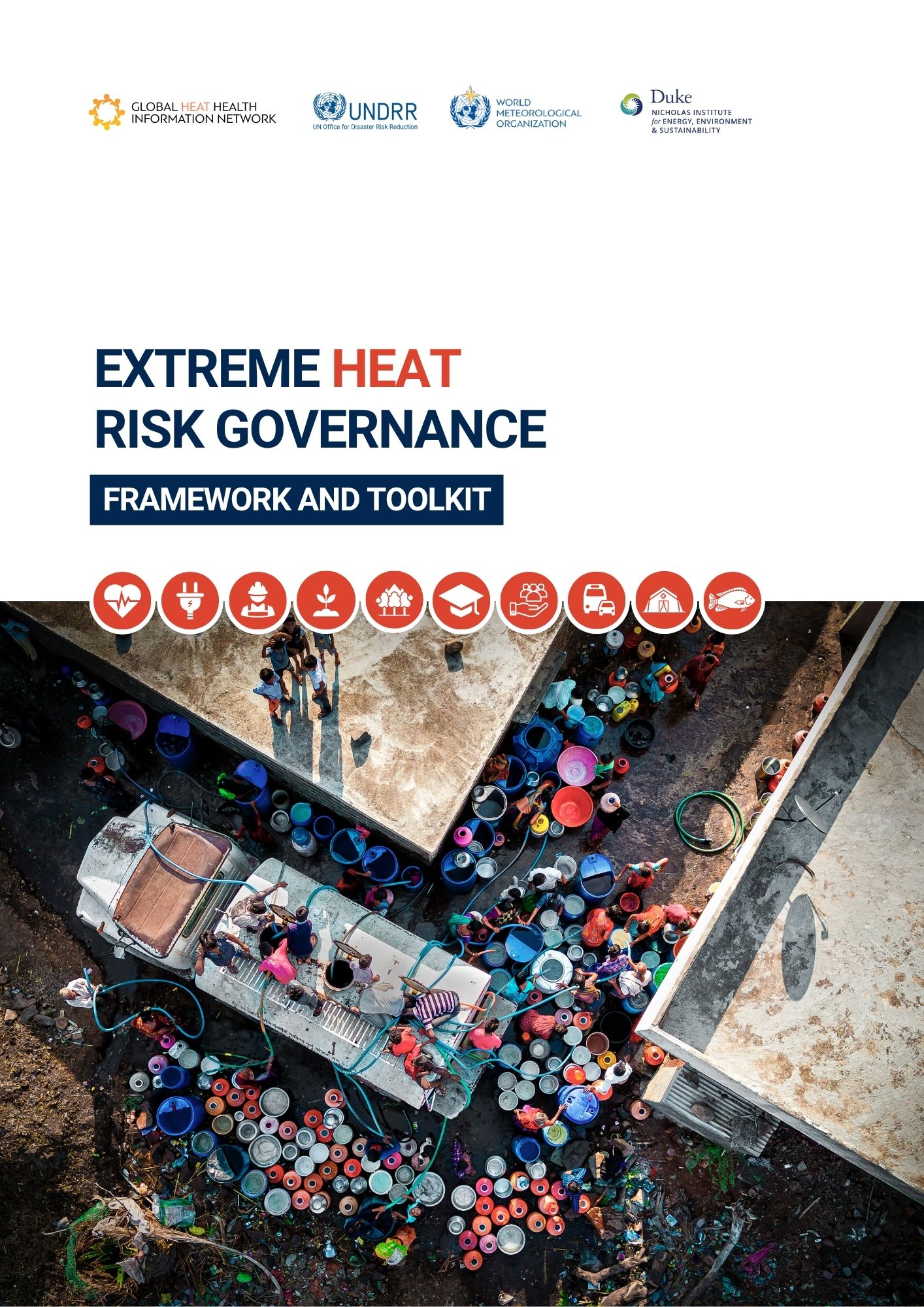Extreme Heat Risk Governance Framework and Toolkit
Organization: GHHIN, UNDRR & WMO
Year: 2025

Extreme heat is one of the world’s most dangerous climate challenges, threatening health, livelihoods, and infrastructure. This new resource provides practical tools for national and local authorities to strengthen coordination, planning, and investment to protect people and systems from escalating heat impacts.
The Framework defines how governments, communities, and institutions can work together to reduce risks in the short, medium, and long term, from early warnings and emergency response to long-term planning and resilience. It offers a flexible, evidence-based approach that can be adapted to any setting, whether a low-resource community, a growing city, or a national government.
Developed through collaboration among more than a dozen global experts and institutions, the Framework incorporates lessons from real-world case studies across different regions. It will be piloted in several countries in the coming year, with updates informed by local experience and feedback.
Three core tools help decision makers put the framework into action:
- Assess the Maturity of your Extreme Heat Risk Governance
This tool helps governments and partners take stock of how ready they are to manage extreme heat. It looks at five areas – awareness, leadership, response, resources, and collaboration – to find what’s working well and what needs improvement. - Operationalize Extreme Heat Risk Governance
This tool helps turn plans into coordinated action. It walks users through a simple four-step cycle – Demand, Plan, Act, and Learn & Improve – to strengthen teamwork, share information, and build capacity across sectors. - Plan for Heat Action
This tool helps identify what makes a strong Heat Action Plan. It includes examples and tips to support long-term planning and cooperation across sectors, helping communities become more resilient to extreme heat.
These tools are designed for use by government agencies, urban planners, public health authorities, emergency managers, development partners, and investors. It supports more inclusive, data-driven, and equitable governance of extreme heat, ensuring that efforts to prevent and respond to heat are coherent and sustainable.